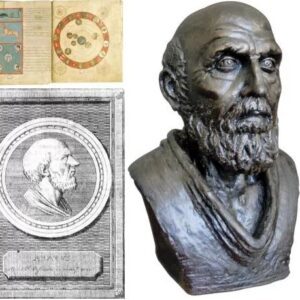
In a stunning find, a Neanderthal family dating back 54,000 years has been discovered inside a cave in the remote mountains of Siberia. Researchers identified the fossils of a father, his teenage daughter, a young male who was probably their cousin or nephew, and an older female who was likely their aunt or grandmother.
This discovery marks the first known Neanderthal family to be unearthed, offering researchers unparalleled insights into prehistoric family dynamics and highlighting the humanity of our ancient ancestors.
Who were the Neanderthals?
Neanderthals were a species of ancient humans who lived in Eurasia about 400,000 to 40,000 years ago. They are believed to have been a robust and physically strong people, who lived in small family groups and hunted large game. They were skilled in making tools and had their own unique culture, which has been explored through the discovery of their artifacts and remains.
Recent DNA research has provided groundbreaking insights into the genetic makeup of Neanderthals and their interactions with modern humans. The discovery of the Neanderthal family in Siberia has shed light on the genetic diversity of this species, which had been previously thought to be limited. This new information provides a deeper understanding of the complex and fascinating world of our ancient ancestors.

Neanderthals, or Homo neanderthalensis, were our closest extinct relatives who lived throughout Europe and southwestern to central Asia between 400,000 to 40,000 years ago. Adapted to colder climates, they relied heavily on meat as a food source and used stone tools, controlled fire, and were adept hunters. They also created their own symbolic traditions such as burials and offerings. Thanks to breakthroughs in DNA research, researchers have extracted DNA from the bones and teeth of 13 Neanderthals found in Siberia’s Chagyrskaya and Okladnikov Caves. These findings provide new insights into prehistoric family dynamics, Neanderthal genetic diversity, and their possible cause of death. Among the researchers is the Swedish geneticist Svante Pääbo, who has revolutionized how scientists use DNA to identify distant human relatives and was awarded the Nobel Prize in Physiology or Medicine in 2022.

Using genetics to unravel the past

In addition to the discovery of the Neanderthal family connections, the Chagyrskaya Cave has also revealed a trove of archaeological treasures, including thousands of bone and teeth fragments and an astounding 90,000 stone tools from the Neanderthal period. Scientists have been conducting excavations at the site since 2007, unearthing evidence that sheds new light on the lives of these ancient human relatives. Researchers like Laurtis Skov from the University of California, Berkeley, have used DNA analysis to identify kinship ties between the discovered individuals and determine how they died. The scientists discovered that the father and daughter found in the cave were related, not siblings, using mitochondrial DNA, which is passed down from the mother to her offspring. They also believe that all 11 people discovered in the cave died at the same time, which was not uncommon for larger groups during the period.
An astonishing discovery

A team of researchers, including renowned Swedish geneticist Svante Pääbo, conducted a study on the Chagyrskaya Cave, where they discovered the 54,000-year-old Neanderthal family. Pääbo, who has made groundbreaking discoveries using unconventional methods such as extracting DNA from cave floors and replicating Neanderthal brain cells, was awarded the Nobel Prize in Physiology or Medicine in October 2022 for his contributions to archeology. The study showed that the family most likely died at the same time, potentially from starvation. Pääbo was amazed that they were able to identify the father and daughter using DNA extracted from bones that are thousands of years old. He has revolutionized how scientists use DNA to identify distant human relatives, having previously reconstructed the entire Neanderthal genome using a sample of bone from a Neanderthal skullcap found in 1856.





